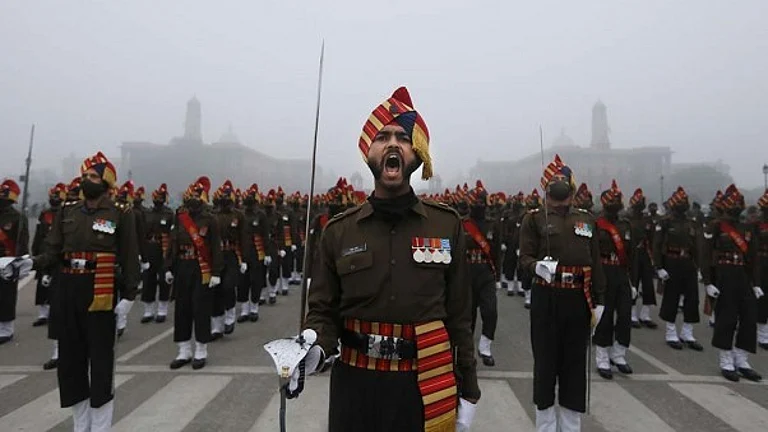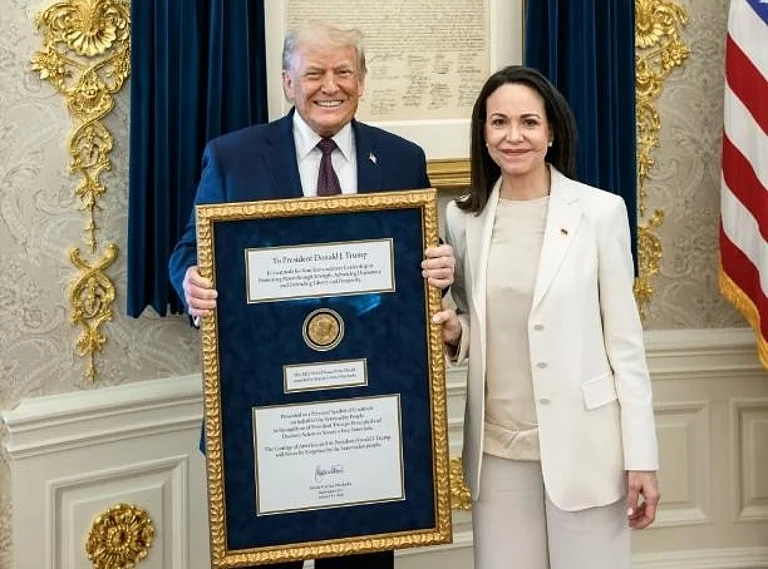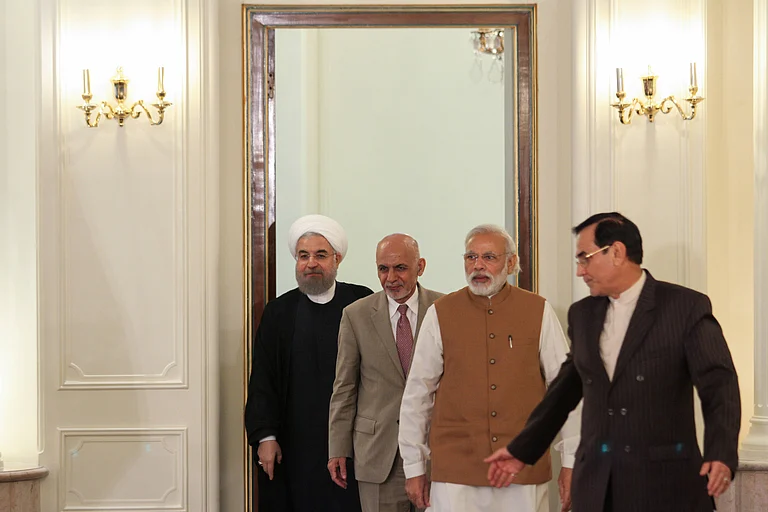There are stories aplenty of movies taking years to complete, like the 1972 super hit Pakeezah which took all of 16 years and the 2009 multi-million-dollar-grossing Avatar that was made in a decade. On the other end of the spectrum was the 2016 Oscar winner Moonlight that took only 25 days of shooting and some recent Hindi films such as Bareilly Ki Barfi, shot in 60 days.
But hold your breath. A yet-to-be-released Kannada film titled Bimba (Reflections) has been shot in just 90 minutes. Yes, 90 minutes from start to finish. And that’s not all. The film was captured in one single, continuous shot in one location with the cast comprising just one actor. And, the background music is played using only one instrument—the flute.
The protagonist, Srinivasa Prabhu, says the film is a record of sorts. As far as he knows, a film with these unique attributes has never been made anywhere in the world. “We are getting in touch with Guinness to record our achievement,” he says.
According to him, there have been some attempts at movies that featured one shot but with several actors or one actor but with many shots. “A full-length commercial movie with one actor and one shot is for the first time, as far as our knowledge goes,” says Prabhu, who is also co-producer and co-director of the film.
Bimba portrays the last 90 minutes of the life of a legendary Mysore–based Kannada writer and poet Samsa (the pen name for Sami Venkatadri Iyer) who lived in the first four decades of the 20th century.
A brilliant writer with an extensively eccentric bent of mind, Samsa suffered from a persecution complex with a particular paranoia of the police during India’s freedom movement. He raved and ranted at the police and was forever looking over his shoulder expecting to be arrested, though it never happened.
Samsa’s work and his persona stuck to Prabhu during his formative years. In 2013, Prabhu—a well-known theatre, film and television personality in Kannada with nearly 40 years of experience—played the role of Samsa on stage in a one-act play. Bimba’s producer and director Murthy, who was in the audience, was taken in by the play and since been persuading Prabhu to bring it to celluloid for a wider audience.
After much thought and discussion with Murthy and other colleagues, Prabhu conceptualised Bimba’s format. “Samsa was a loner with a highly unpredictable behaviour. Very few had the courage to engage with him. He was a contemporary of other Kannada literary giants of the time including T.P. Kailasam and G.P. Rajarathnam who would occasionally meet him and help him with money and emotional support.
Samsa’s troubled mind eventually led him to contemplate suicide at least four times. The film takes viewers through the dramatic last 90 minutes of his life, at the end of which the 40-year-old Samsa makes yet another effort to die, this time successfully.
The action takes place inside his room, where various objects, including the mirror and his pocket watch, remind Samsa of the stories behind each of them. He converses with his reflection in the mirror laying bare the story of his life, his fears and concerns amidst intense activity in India’s freedom struggle at the time.
The challenges in making the film were seemingly insurmountable. There were occasions when the producers wondered whether they had bitten more than they could chew. Prabhu had to literally memorise 52 pages of script. And, it had to come out in a single unerring flow. “It took months of practice to get it all into the head,” says Prabhu. “Experience helped,” he adds.
The team conducted meticulous rehearsals to fine-tune the script and shoot with total precision. “This helped us cut down on certain parts as it was becoming too long and ensured that we did not cross 90 minutes,” explains Prabhu.
The actor concedes that in his case, if a flaw crept here or there, that could be ironed out later during dubbing. The real difficulty was the camera. There was simply no alternative but to shoot perfectly at the first opportunity. P.K.H. Das, an experienced award-winning cinematographer, used his track record to come up with innovative use of the camera. “I modified the battery to make it last through the 90 minutes,” says Das.
During the first attempt, when 110 minutes had been shot, the camera overheated and malfunctioned, and the process had to be abandoned—just 20 minutes before the end. The entire shooting had to be repeated. “There was no choice,” says Das, who fixed a fan on the camera the second time around.
Das fixed the camera on to his body using shoulder pads and other accessories and ran, stood and moved deftly within the location, a mere 15x15 sq feet room. “For two days after the shoot, I could not move my hands,” says the cameraman. But for Das, shooting Bimba was among the most unforgettable experiences in his life. Would he do a similar thing again? “I am not sure, but this is not something that can happen often.” The script and story were amenable to this experiment. “On the floor, during the shoot, the way Prabhu acted I got immersed in it and never felt the burden of the camera,” says Das.
At the end of the Herculean effort, Bimba is on the verge of release. Of course, assuming that distributors want to buy such a unique film. Does he think the box office will be receptive to Bimba? Prabhu says they are keeping their fingers crossed. “While it is indeed a full-length film, we don’t know how the audience will respond to our attempt,” he adds.
To keep up the uniqueness of the film, only one instrument is used for the background music—a modified version of the flute played by well-known Hindustani flautist Pravin Godkhindi.
Though there is not much post-production work for Bambi, unlike a conventional movie, some final touches are being given to the film before it made the trip to the censor’s office, a must step to open commercially.
There are alternative methods of screening too. Like the international film festival circuit and localised screenings across the country’s film clubs. To facilitate optimal access for all audiences, Bimba is also being sub-titled. Irrespective of whether the film is a success at the box office, the Prabhu-Murthy team is confident that it will attract attention the world over among film buffs and the movie industry.
***
Brief History Of Time...
...it took to make these films
- 16 years Pakeezah
- 10 years Avatar
- 25 days Moonlight
- 60 Days Bareilly Ki Barfi
- 90 minutes Bimba
(The writer is an independent journalist)

























